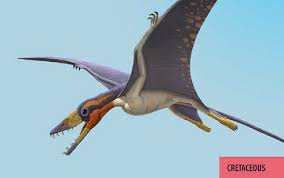Next:
spotted
[/quote]
1974's big hit kids' show Land of the Lost's Pakuni Language, my expansion of it, "Rogers Pakuni":
striped (adj): sungsa* < / be striped SUNG adjetive SA /.
* Marks words not invented by the language's 1974 creator, Professor Victoria Fromkin. The language is based off of Kwa Languages from the Niger-Kordofanian family.

- download (70).jpg (4.79 KiB) Viewed 24348 times
angustinarpterus
Sample sentence:
The australopithecus "Ta" used the "two logs smash the head trap" on two angustinarpteruses, three months ago, in a dicroidium fern hunter's disguise, then he prepared its hide using a thickened working edge scraper.
Egodichi* tatada*
sha Ta Paku
kocha*
itipini* sungsani* dodani
tum eyigo* iki*,
je* we sona* wa efi tum
ebafi*
jayechi*.
"In-line gloss":
YEAR-ADV Egodi-chi* ONE FOURTH-NUMBER tata-da*
WHICH sha "TA" (OF) Ta AUSTRALOPITHECUS Paku
USED THE TWO LOGS SMASH THE HEAD TRAP ON kocha*
ANGUSTINARPTERUS-ES itipi-ni*
STRIPED-ADJ-PLURAL sung-sa-ni*
TWO-NUMBER-PLURAL do-da-ni
USING tum DICROIDIUM FERN (OF) eyigo* HUNTER'S DISGUISE iki*,
THEN je* HE we PREPARED ITS HIDE sona* ITS wa THING efi USING tum
A THICKENED WORKING EDGE TOOL ebafi*,
UNCERTAIN INFERENCE EVIDENTIAL jayechi*.
Here are some grammars of the language:
https://naviklingon.blogspot.com/2018/1 ... w=flipcard
(NOTHING)- marks Proper Nouns
e- marks inanimate nouns
i- marks animate non-humanoids
-chi marks adverbs
-sa marks adjectives
(The "two logs smash the head trap" is perhaps not an authentic prehistoric trap. I got it from the ewok battle scene in "Star Wars: Return of the Jedi". Loveable little teddy bears. It also reminds me of the "Congo" book by Michael Crichton about friendly, sign-language gorillas found to inhabit still-diamond-rich King Solomon's Mines.)
I don't think I've made a word for spotted yet so I'll use "striped". It almost occurs in the name for the flying dinosaur angustinarpterus, which is ITIPI in Pakuni, from / animate, non-human noun class I red and yellow striped TIJISA tail EPIPU /.
The picture I used for it had it red and yellow striped. Which is interesting because we don't know what colors their skins, hair, or feathers actually were. It's just educated guesses. Now, I'm used to studying animals and animal name etymology.
The idea of having a word like "red and yellow striped" comes from my study of Classical Chinese words as in Legge's "Classic of Odes" and Kroll's "Student's Dictionary of Classical and Medieval Chinese". Specifically, horse color terms.
For this one, "SUNG" striped is computer-generated but recently I've just been making up words based on Fromkin's given phonology with the occaisional use of words or roots made up by Fromkin. I could derive the words from roots but I prefer to put that energy into studying animal name etymology, studying dinosaurs, and having a little bit of a good time.
I should maybe do some more based on the skin colors of the dinosaurs. Or just have some available as variants. Who knows? I might come back to the language or put a lot of it online to some minor acclaim. It's mostly hand-written and I don't know how much more I'll get typed up.
Here's what I have online so far for dinosaur names:
My own inventions:
https://naviklingon.blogspot.com/2018/1 ... w=flipcard
From the show:
https://naviklingon.blogspot.com/2018/1 ... w=flipcard
I usually don't make up so many words for my conlangs, instead focusing on exploring grammar or writing concepts.
Next:
meteorite